ICGOO在线商城 > 集成电路(IC) > PMIC - 稳压器 - 线性 > MCP1702-3302E/TO
- 型号: MCP1702-3302E/TO
- 制造商: Microchip
- 库位|库存: xxxx|xxxx
- 要求:
| 数量阶梯 | 香港交货 | 国内含税 |
| +xxxx | $xxxx | ¥xxxx |
查看当月历史价格
查看今年历史价格
MCP1702-3302E/TO产品简介:
ICGOO电子元器件商城为您提供MCP1702-3302E/TO由Microchip设计生产,在icgoo商城现货销售,并且可以通过原厂、代理商等渠道进行代购。 MCP1702-3302E/TO价格参考¥3.10-¥3.19。MicrochipMCP1702-3302E/TO封装/规格:PMIC - 稳压器 - 线性, Linear Voltage Regulator IC Positive Fixed 1 Output 3.3V 250mA TO-92-3。您可以下载MCP1702-3302E/TO参考资料、Datasheet数据手册功能说明书,资料中有MCP1702-3302E/TO 详细功能的应用电路图电压和使用方法及教程。
| 参数 | 数值 |
| 产品目录 | 集成电路 (IC)半导体 |
| 描述 | IC REG LDO 3.3V 0.25A TO92-3低压差稳压器 LDO w/ Low Quiescent |
| 产品分类 | |
| 品牌 | Microchip Technology |
| 产品手册 | |
| 产品图片 |
|
| rohs | 符合RoHS无铅 / 符合限制有害物质指令(RoHS)规范要求 |
| 产品系列 | 电源管理 IC,低压差稳压器,Microchip Technology MCP1702-3302E/TO- |
| 数据手册 | http://www.microchip.com/mymicrochip/filehandler.aspx?ddocname=en028186 |
| 产品型号 | MCP1702-3302E/TO |
| 产品目录页面 | |
| 产品种类 | 低压差稳压器 |
| 供应商器件封装 | TO-92-3 |
| 其它名称 | MCP17023302ETO |
| 包装 | 散装 |
| 商标 | Microchip Technology |
| 回动电压—最大值 | 725 mV at 250 mA |
| 安装类型 | 通孔 |
| 安装风格 | Through Hole |
| 封装 | Bulk |
| 封装/外壳 | TO-226-3、TO-92-3 标准主体 |
| 封装/箱体 | TO-92 |
| 工作温度 | -40°C ~ 125°C |
| 工厂包装数量 | 1000 |
| 最大工作温度 | + 125 C |
| 最大输入电压 | 13.2 V |
| 最小工作温度 | - 40 C |
| 最小输入电压 | + 2.7 V |
| 标准包装 | 1,000 |
| 电压-跌落(典型值) | 0.525V @ 250mA |
| 电压-输入 | 最高 13.2V |
| 电压-输出 | 3.3V |
| 电压调节准确度 | 0.4 % |
| 电流-输出 | 250mA |
| 电流-限制(最小值) | - |
| 稳压器拓扑 | 正,固定式 |
| 稳压器数 | 1 |
| 线路调整率 | 0.1 % / V |
| 负载调节 | 1 % |
| 输入偏压电流—最大 | 0.002 mA |
| 输出电压 | 3.3 V |
| 输出电流 | 250 mA |
| 输出端数量 | 1 Output |
| 输出类型 | Fixed |
| 配用 | /product-detail/zh/GPIODM-KPLCD/GPIODM-KPLCD-ND/1616610 |

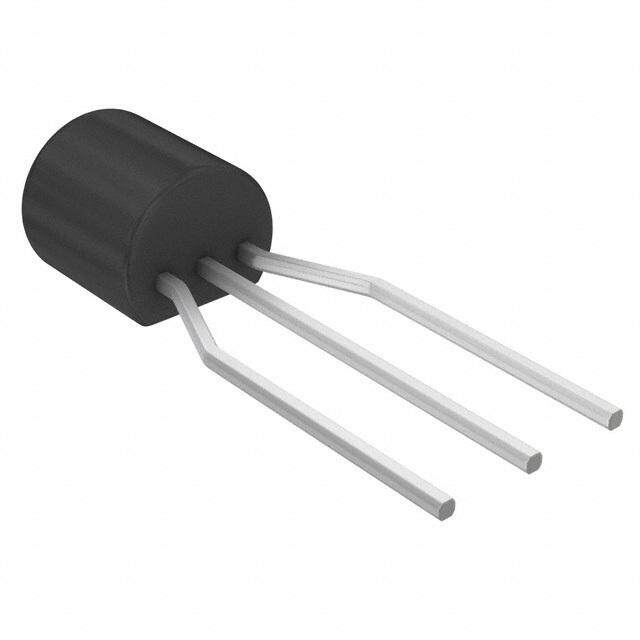
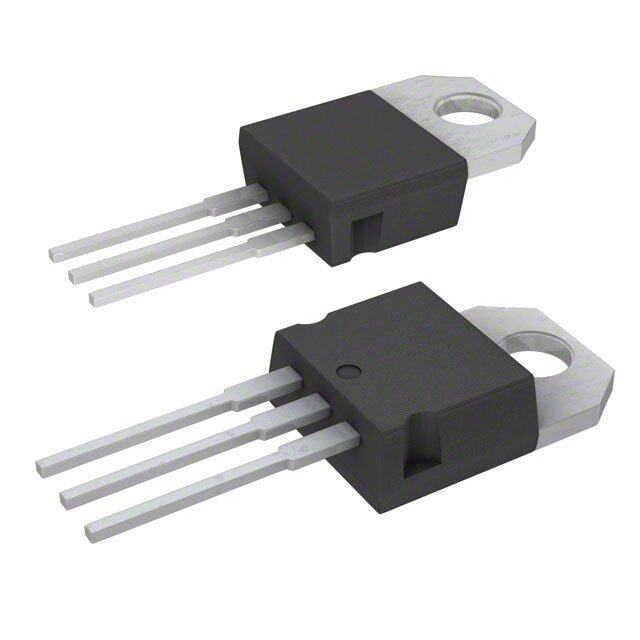


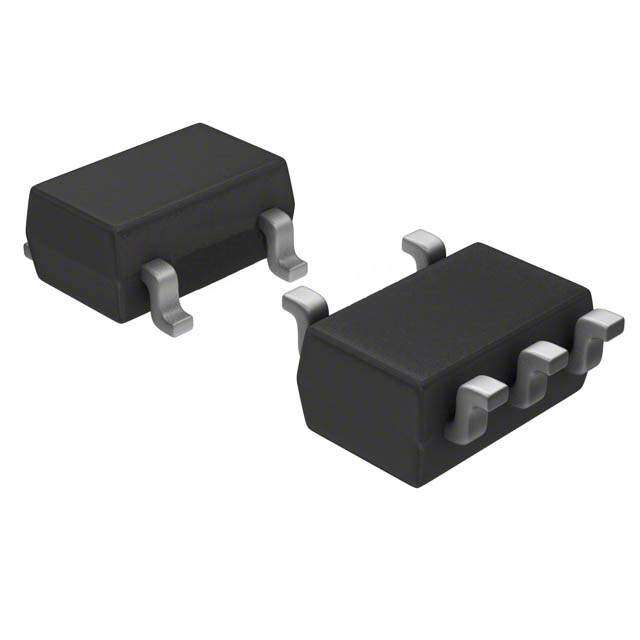
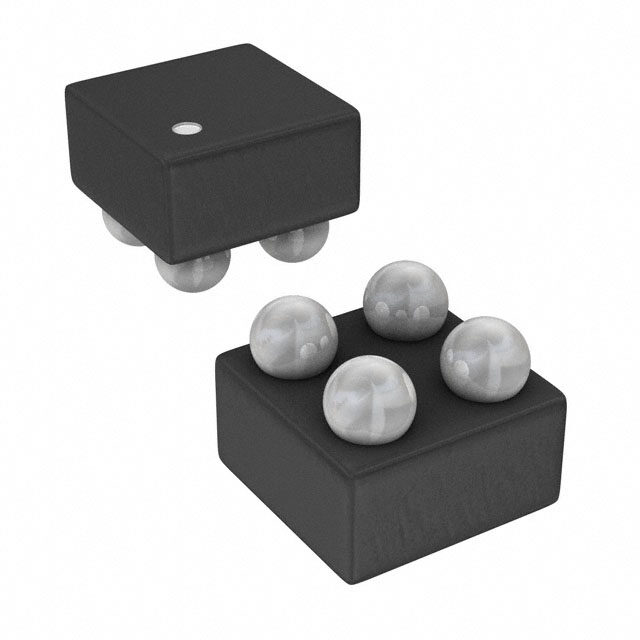
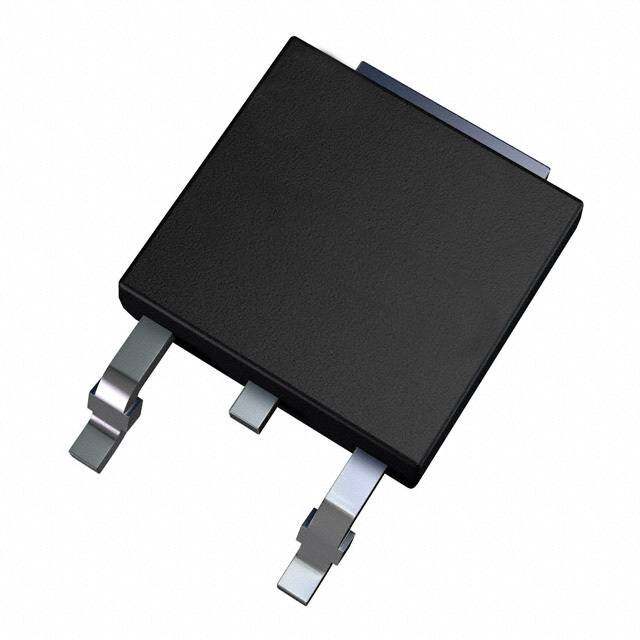


- 商务部:美国ITC正式对集成电路等产品启动337调查
- 曝三星4nm工艺存在良率问题 高通将骁龙8 Gen1或转产台积电
- 太阳诱电将投资9.5亿元在常州建新厂生产MLCC 预计2023年完工
- 英特尔发布欧洲新工厂建设计划 深化IDM 2.0 战略
- 台积电先进制程称霸业界 有大客户加持明年业绩稳了
- 达到5530亿美元!SIA预计今年全球半导体销售额将创下新高
- 英特尔拟将自动驾驶子公司Mobileye上市 估值或超500亿美元
- 三星加码芯片和SET,合并消费电子和移动部门,撤换高东真等 CEO
- 三星电子宣布重大人事变动 还合并消费电子和移动部门
- 海关总署:前11个月进口集成电路产品价值2.52万亿元 增长14.8%

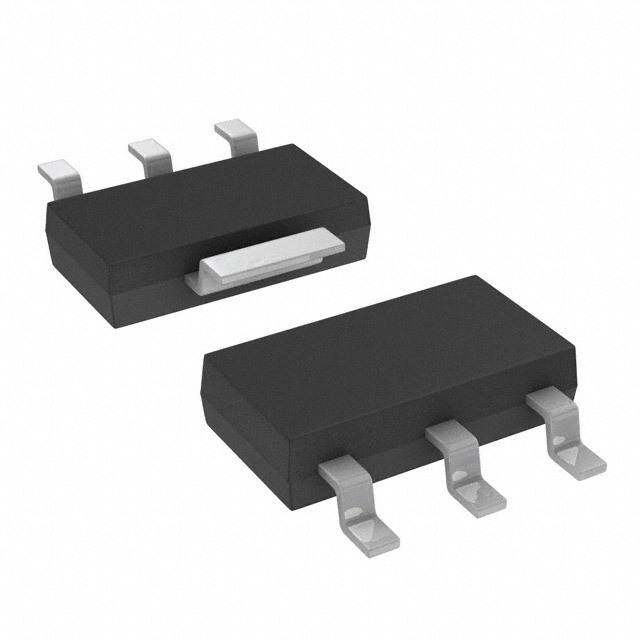

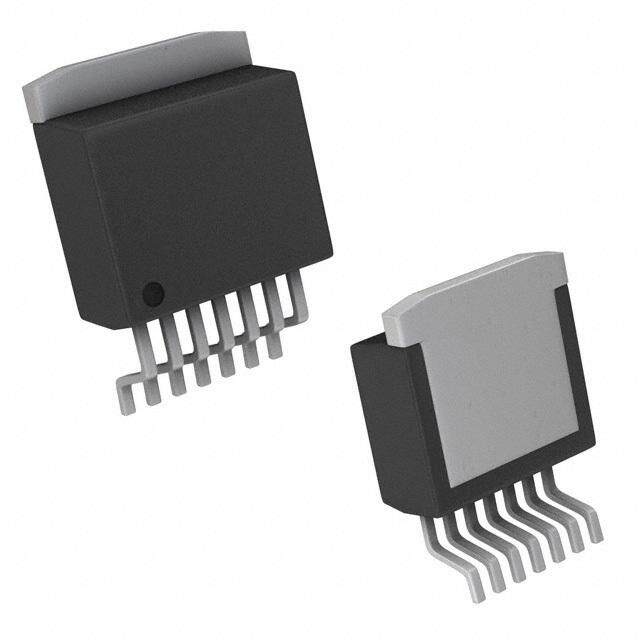
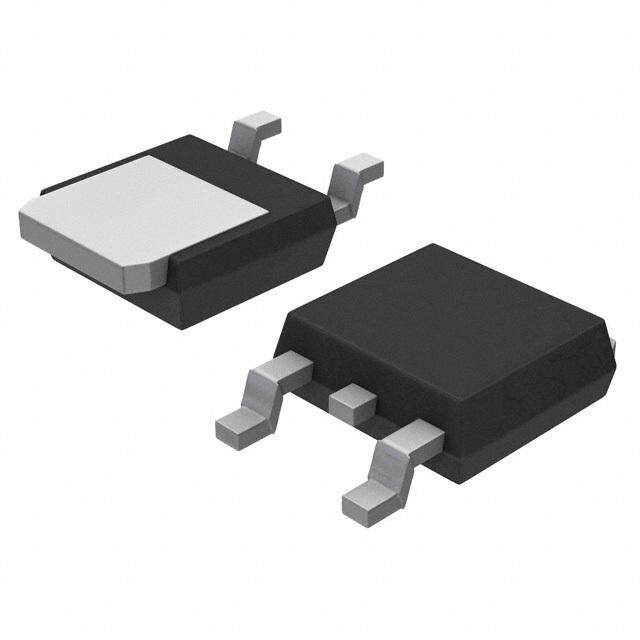
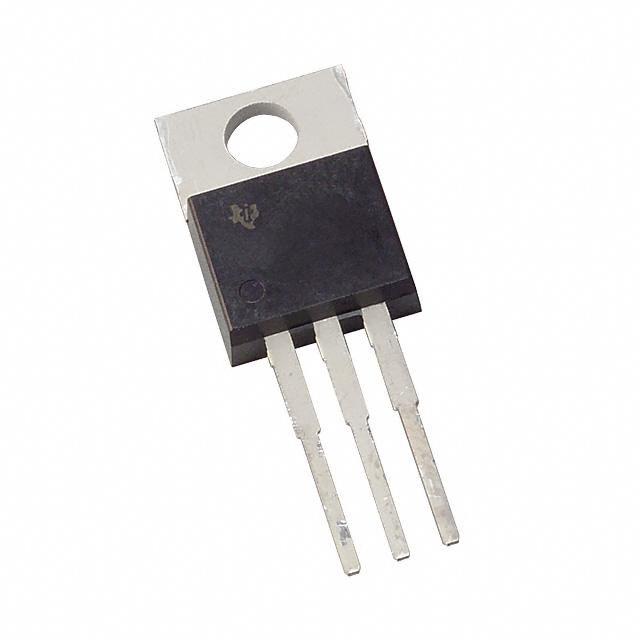
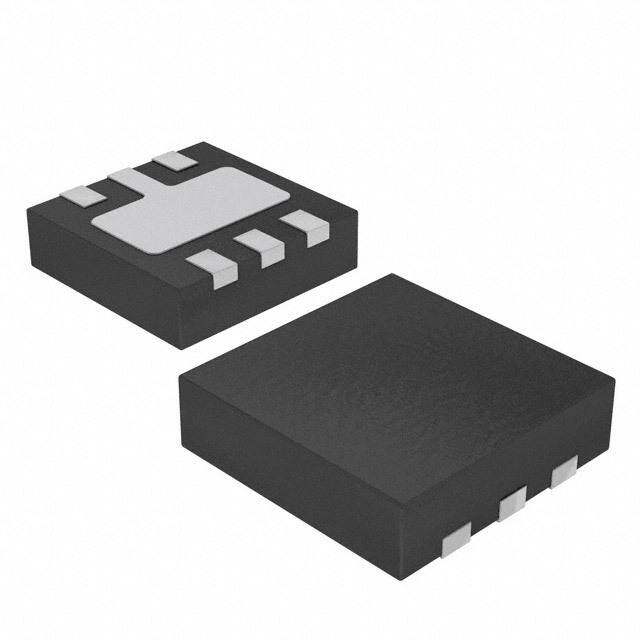
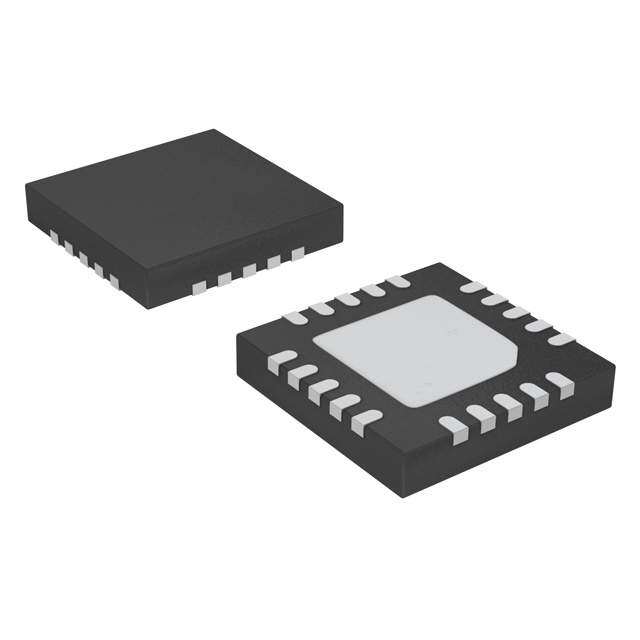
PDF Datasheet 数据手册内容提取
MCP1702 250 mA Low Quiescent Current LDO Regulator Features Description • 2.0µA Quiescent Current (typical) The MCP1702 is a family of CMOS low dropout (LDO) • Input Operating Voltage Range: 2.7V to 13.2V voltage regulators that can deliver up to 250mA of current while consuming only 2.0µA of quiescent • 250mA Output Current for Output Voltages ≥ 2.5V current (typical). The input operating range is specified • 200mA Output Current for Output Voltages < 2.5V from 2.7V to 13.2V, making it an ideal choice for two to • Low Dropout (LDO) voltage six primary cell battery-powered applications, 9V alka- - 625mV typical @ 250mA (VOUT = 2.8V) line and one or two cell Li-Ion-powered applications. • 0.4% Typical Output Voltage Tolerance The MCP1702 is capable of delivering 250mA with • Standard Output Voltage Options: only 625mV (typical) of input to output voltage - 1.2V, 1.5V, 1.8V, 2.5V, 2.8V, 3.0V, 3.3V, 4.0V, differential (VOUT=2.8V). The output voltage tolerance 5.0V of the MCP1702 is typically ±0.4% at +25°C and ±3% maximum over the operating junction temperature • Output voltage range 1.2V to 5.5V in 0.1V range of -40°C to +125°C. Line regulation is ±0.1% Increments (50mV increments available upon request) typical at +25°C. • Stable with 1.0µF to 22µF Output Capacitor Output voltages available for the MCP1702 range from 1.2V to 5.0V. The LDO output is stable when using only • Short-Circuit Protection 1µF of output capacitance. Ceramic, tantalum or • Overtemperature Protection aluminum electrolytic capacitors can all be used for input and output. Overcurrent limit and Applications overtemperature shutdown provide a robust solution • Battery-powered Devices for any application. • Battery-powered Alarm Circuits Package options include the SOT-23A, SOT89-3, and • Smoke Detectors TO-92. • CO2 Detectors Package Types • Pagers and Cellular Phones • Smart Battery Packs 3-Pin SOT-23A 3-Pin SOT-89 • Low Quiescent Current Voltage Reference VIN VIN • PDAs 3 • Digital Cameras MCP1702 • Microcontroller Power MCP1702 • Solar-Powered Instruments 1 2 3 1 2 • Consumer Products • Battery Powered Data Loggers GND VOUT GNDVINVOUT 3-Pin TO-92 Related Literature 1 23 • AN765, “Using Microchip’s Micropower LDOs”, DS00765, Microchip Technology Inc., 2002 • AN766, “Pin-Compatible CMOS Upgrades to Bottom BiPolar LDOs”, DS00766, View Microchip Technology Inc., 2002 • AN792, “A Method to Determine How Much Power a SOT23 Can Dissipate in an Application”, GNDVIN VOUT DS00792, Microchip Technology Inc., 2001 © 2006 Microchip Technology Inc. DS22008A-page 1
MCP1702 Functional Block Diagrams MCP1702 V V IN OUT Error Amplifier +V IN Voltage - Reference + Overcurrent Overtemperature GND Typical Application Circuits MCP1702 V OUT 3.3V V OUT VIN IOUT VIN COUT 50mA 9V + CIN GND 1µF Ceramic Battery 1µF Ceramic DS22008A-page 2 © 2006 Microchip Technology Inc.
MCP1702 1.0 ELECTRICAL † Notice: Stresses above those listed under “Maximum Rat- ings” may cause permanent damage to the device. This is a CHARACTERISTICS stress rating only and functional operation of the device at those or any other conditions above those indicated in the Absolute Maximum Ratings † operational listings of this specification is not implied. Expo- sure to maximum rating conditions for extended periods may VDD...............................................................................+14.5V affect device reliability. All inputs and outputs w.r.t. .............(V -0.3V) to (V +0.3V) SS IN Peak Output Current...................................................500mA Storage temperature.....................................-65°C to +150°C Maximum Junction Temperature...................................150°C Operating Junction Temperature...................-40°C to +125°C ESD protection on all pins (HBM;MM)...............≥ 4kV; ≥ 400V DC CHARACTERISTICS Electrical Specifications: Unless otherwise specified, all limits are established for V = V + V , Note1, IN OUT(MAX) DROPOUT(MAX) I = 100µA, C = 1µF (X7R), C = 1µF (X7R), T = +25°C. LOAD OUT IN A Boldface type applies for junction temperatures, T of -40°C to +125°C. (Note7) J Parameters Sym Min Typ Max Units Conditions Input / Output Characteristics Input Operating Voltage V 2.7 — 13.2 V Note1 IN Input Quiescent Current I — 2.0 5 µA I = 0mA q L Maximum Output Current I 250 — — mA For V ≥ 2.5V OUT_mA R 50 100 — mA For V < 2.5V, V ≥ 2.7V R IN 100 130 — mA For V < 2.5V, V ≥ 2.95V R IN 150 200 — mA For V < 2.5V, V ≥ 3.2V R IN 200 250 — mA For V < 2.5V, V ≥ 3.45V R IN Output Short Circuit Current I — 400 — mA V = V (Note1), V = GND, OUT_SC IN IN(MIN) OUT Current (average current) measured 10ms after short is applied. Output Voltage Regulation V V -3.0% V ±0.4 V +3.0% V Note2 OUT R R R V -2.0% % V +2.0% R R V Temperature Coefficient TCV — 50 150 ppm/°C Note3 OUT OUT Line Regulation ΔV / -0.3 ±0.1 +0.3 %/V (V + V ) OUT OUT(MAX) DROPOUT(MAX) (V XΔV ) ≤ V ≤ 13.2V, (Note1) OUT IN IN Load Regulation ΔV /V -2.5 ±1.0 +2.5 % I = 1.0mA to 250mA for V ≥ 2.5V OUT OUT L R I = 1.0mA to 200mA for V < 2.5V, L R V = 3.45V Note4 IN Note 1: The minimum V must meet two conditions: V ≥ 2.7V and V ≥ V + V . IN IN IN OUT(MAX) DROPOUT(MAX) 2: V is the nominal regulator output voltage. For example: V = 1.2V, 1.5V, 1.8V, 2.5V, 2.8V, 3.0V, 3.3V, 4.0V, or 5.0V. R R The input voltage V = V + V or V = 2.7V (whichever is greater); I = 100µA. IN OUT(MAX) DROPOUT(MAX) IN OUT 3: TCV = (V - V ) *106 / (V * ΔTemperature), V = highest voltage measured over the OUT OUT-HIGH OUT-LOW R OUT-HIGH temperature range. V = lowest voltage measured over the temperature range. OUT-LOW 4: Load regulation is measured at a constant junction temperature using low duty cycle pulse testing. Changes in output voltage due to heating effects are determined using thermal regulation specification TCV . OUT 5: Dropout voltage is defined as the input to output differential at which the output voltage drops 2% below its measured value with an applied input voltage of V + V or 2.7V, whichever is greater. OUT(MAX) DROPOUT(MAX) 6: The maximum allowable power dissipation is a function of ambient temperature, the maximum allowable junction temperature and the thermal resistance from junction to air (i.e., T , T , θ ). Exceeding the maximum allowable power A J JA dissipation will cause the device operating junction temperature to exceed the maximum 150°C rating. Sustained junction temperatures above 150°C can impact the device reliability. 7: The junction temperature is approximated by soaking the device under test at an ambient temperature equal to the desired Junction temperature. The test time is small enough such that the rise in the Junction temperature over the ambient temperature is not significant. © 2006 Microchip Technology Inc. DS22008A-page 3
MCP1702 DC CHARACTERISTICS (CONTINUED) Electrical Specifications: Unless otherwise specified, all limits are established for V = V + V , Note1, IN OUT(MAX) DROPOUT(MAX) I = 100µA, C = 1µF (X7R), C = 1µF (X7R), T = +25°C. LOAD OUT IN A Boldface type applies for junction temperatures, T of -40°C to +125°C. (Note7) J Parameters Sym Min Typ Max Units Conditions Dropout Voltage V — 330 650 mV I = 250mA, V = 5.0V DROPOUT L R (Note1, Note5) — 525 725 mV I = 250mA, 3.3V ≤ V < 5.0V L R — 625 975 mV I = 250mA, 2.8V ≤ V < 3.3V L R — 750 1100 mV I = 250mA, 2.5V ≤ V < 2.8V L R — — — mV V < 2.5V, See Maximum Output R Current Parameter Output Delay Time T — 1000 — µs V = 0V to 6V, V = 90% V DELAY IN OUT R R = 50Ω resistive L Output Noise e — 8 µV/(Hz)1/2 I = 50mA, f = 1kHz, C = 1µF N L OUT Power Supply Ripple PSRR — 44 — dB f = 100Hz, C = 1µF, I = 50mA, OUT L Rejection Ratio V = 100mV pk-pk, C = 0µF, INAC IN V =1.2V R Thermal Shutdown Protection T — 150 — °C SD Note 1: The minimum V must meet two conditions: V ≥ 2.7V and V ≥ V + V . IN IN IN OUT(MAX) DROPOUT(MAX) 2: V is the nominal regulator output voltage. For example: V = 1.2V, 1.5V, 1.8V, 2.5V, 2.8V, 3.0V, 3.3V, 4.0V, or 5.0V. R R The input voltage V = V + V or V = 2.7V (whichever is greater); I = 100µA. IN OUT(MAX) DROPOUT(MAX) IN OUT 3: TCV = (V - V ) *106 / (V * ΔTemperature), V = highest voltage measured over the OUT OUT-HIGH OUT-LOW R OUT-HIGH temperature range. V = lowest voltage measured over the temperature range. OUT-LOW 4: Load regulation is measured at a constant junction temperature using low duty cycle pulse testing. Changes in output voltage due to heating effects are determined using thermal regulation specification TCV . OUT 5: Dropout voltage is defined as the input to output differential at which the output voltage drops 2% below its measured value with an applied input voltage of V + V or 2.7V, whichever is greater. OUT(MAX) DROPOUT(MAX) 6: The maximum allowable power dissipation is a function of ambient temperature, the maximum allowable junction temperature and the thermal resistance from junction to air (i.e., T , T , θ ). Exceeding the maximum allowable power A J JA dissipation will cause the device operating junction temperature to exceed the maximum 150°C rating. Sustained junction temperatures above 150°C can impact the device reliability. 7: The junction temperature is approximated by soaking the device under test at an ambient temperature equal to the desired Junction temperature. The test time is small enough such that the rise in the Junction temperature over the ambient temperature is not significant. TEMPERATURE SPECIFICATIONS Electrical Characteristics: Unless otherwise specified, all limits are established for V = V + 1V or 2.7V, whichever is greater, IN R I = 100µA, C = 1µF (X7R), C = 1µF (X7R), T = +25°C. LOAD OUT IN A Boldface type applies for junction temperatures, T (Note1) of -40°C to +125°C. J Parameters Sym Min Typ Max Units Conditions Temperature Ranges Specified Temperature Range T -40 +125 °C J Operating Temperature Range T -40 +125 °C J Storage Temperature Range T -65 +150 °C A Thermal Package Resistance Thermal Resistance, SOT-23A EIA/JEDEC JESD51-7 θ — 336 — °C/W JA FR-4 0.063 4-Layer Board Thermal Resistance, SOT89 EIA/JEDEC JESD51-7 θ — 52 — °C/W JA FR-4 0.063 4-Layer Board Thermal Resistance, TO-92 θ — 131.9 — °C/W JA Note 1: The maximum allowable power dissipation is a function of ambient temperature, the maximum allowable junction temperature and the thermal resistance from junction to air (i.e., T , T , θ ). Exceeding the maximum allowable power A J JA dissipation will cause the device operating junction temperature to exceed the maximum 150°C rating. Sustained junction temperatures above 150°C can impact the device reliability. DS22008A-page 4 © 2006 Microchip Technology Inc.
MCP1702 2.0 TYPICAL PERFORMANCE CURVES Note: The graphs and tables provided following this note are a statistical summary based on a limited number of samples and are provided for informational purposes only. The performance characteristics listed herein are not tested or guaranteed. In some graphs or tables, the data presented may be outside the specified operating range (e.g., outside specified power supply range) and therefore outside the warranted range. Note: Unless otherwise indicated: V = 2.8V, C = 1µF Ceramic (X7R), C = 1µF Ceramic (X7R), I = 100µA, R OUT IN L T = +25°C, V = V + V . A IN OUT(MAX) DROPOUT(MAX) Note: Junction Temperature (T) is approximated by soaking the device under test to an ambient temperature equal to the desired junction J temperature. The test time is small enough such that the rise in Junction temperature over the Ambient temperature is not significant. 5.00 120.00 VOUT= 1.2V Temperature = +25°C nt Current (µA) 234...000000 +25°C +90°C +130°C 0°C Current (µA) 1680000...000000 VVOINU =T =2 .17.V2V ce D 40.00 s N uie 1.00 -45°C G 20.00 Q 0.00 0.00 2 4 6 8 10 12 14 0 40 80 120 160 200 Input Voltage (V) Load Current (mA) FIGURE 2-1: Quiescent Current vs. Input FIGURE 2-4: Ground Current vs. Load Voltage. Current. 5.00 120.00 VOUT= 2.8V Temperature = +25°C A) 100.00 nt Current (µ 234...000000 +25°C +90°C +130°C Current (µA) 6800..0000 VVOINU =T =6 .50.V0V sce 0°C ND 40.00 VOUT = 2.8V uie 1.00 -45°C G 20.00 VIN = 3.8V Q 0.00 0.00 3 5 7 9 11 13 0 50 100 150 200 250 Input Voltage (V) Load Current (mA) FIGURE 2-2: Quiescent Current vs.Input FIGURE 2-5: Ground Current vs. Load Voltage. Current. 5.00 3.00 nt (µA) 4.00 +130°C VOUT= 5.0V nt (µA) 22..0500 VVOINU =T =3 .28.V8V VVOINU =T =6 .50.V0V IOUT= 0 mA e e Curr 3.00 Curr 1.50 ent +90°C ent 1.00 VVOINU =T =2 .17.V2V esc 2.00 +25°C 0°C esc ui ui 0.50 Q -45°C Q 1.00 0.00 6 7 8 9 10 11 12 13 14 -45 -20 5 30 55 80 105 130 Input Voltage (V) Junction Temperature (°C) FIGURE 2-3: Quiescent Current vs.Input FIGURE 2-6: Quiescent Current vs. Voltage. Junction Temperature. © 2006 Microchip Technology Inc. DS22008A-page 5
MCP1702 Note: Unless otherwise indicated: V = 2.8V, C = 1µF Ceramic (X7R), C = 1µF Ceramic (X7R), I = 100µA, R OUT IN L T = +25°C, V = V + V . A IN OUT(MAX) DROPOUT(MAX) 1.24 1.23 VOUT = 1.2V VOUT= 1.2V V) 1.23 -45°C ILOAD = 0.1 mA V) 1.22 -45°C 0°C e ( 1.22 0°C e ( ag ag 1.21 olt 1.21 olt +25°C V V utput 1.20 +90°C +130°C utput 1.20 +130°C +90°C O 1.19 +25°C O 1.19 1.18 1.18 2 4 6 8 10 12 14 0 20 40 60 80 100 Input Voltage (V) Load Current (mA) FIGURE 2-7: Output Voltage vs. Input FIGURE 2-10: Output Voltage vs. Load Voltage. Current. 2.85 2.83 2.84 VILOOUADT == 20..81V mA 2.82 VOUT= 2.8V ge (V) 22..8823 +90°C +130°C ge (V) 2.81 +90°C +130°C a a olt 2.81 olt 2.80 V V put 2.80 put 2.79 Out 2.79 0°C -45°C Out 2.78 +25°C 0°C 2.78 +25°C -45°C 2.77 2.77 3 4 5 6 7 8 9 10 11 12 13 14 0 50 100 150 200 250 Input Voltage (V) Load Current (mA) FIGURE 2-8: Output Voltage vs. Input FIGURE 2-11: Output Voltage vs. Load Voltage. Current. 5.04 e (V) 55..0046 VILOOUATD == 50..01V +m90A°C +130°C e (V) 55..0023 +130°C +90°C VOUT= 5.0V g g 5.01 olta 5.02 olta 5.00 V V ut 5.00 ut 4.99 0°C utp 0°C -45°C utp 4.98 O 4.98 O +25°C 4.97 -45°C +25°C 4.96 4.96 6 7 8 9 10 11 12 13 14 0 50 100 150 200 250 Input Voltage (V) Load Current (mA) FIGURE 2-9: Output Voltage vs. Input FIGURE 2-12: Output Voltage vs. Load Voltage. Current. DS22008A-page 6 © 2006 Microchip Technology Inc.
MCP1702 Note: Unless otherwise indicated: V = 2.8V, C = 1µF Ceramic (X7R), C = 1µF Ceramic (X7R), I = 100µA, R OUT IN L T = +25°C, V = V + V . A IN OUT(MAX) DROPOUT(MAX) 1.40 1.30 VOUT = 1.8V +130°C age (V) 11..1200 +25°C +90°C Volt 1.00 ut 0.90 0°C o -45°C p o 0.80 Dr 0.70 0.60 100 120 140 160 180 200 Load Current (mA) FIGURE 2-13: Dropout Voltage vs. Load FIGURE 2-16: Dynamic Line Response. Current. 1.00 0.90 VOUT = 2.8V ge (V) 00..7800 +90°C +130°C a 0.60 Volt 0.50 +25°C pout 00..3400 +0°C o -45°C Dr 0.20 0.10 0.00 0 25 50 75 100 125 150 175 200 225 250 Load Current (mA) FIGURE 2-14: Dropout Voltage vs. Load FIGURE 2-17: Dynamic Line Response. Current. 0.50 600.00 0.45 VOUT = 5.0V A) VOUT = 2.8V pout Voltage (V) 000000......122334505050 +25°C+90°C +130°C +0°C Circuit Current (m 234500000000....00000000 ROUT < 0.1(cid:159) Dro 0.10 -45°C ort 100.00 0.05 Sh 0.00 0.00 0 25 50 75 100 125 150 175 200 225 250 4 6 8 10 12 14 Load Current (mA) Input Voltage (V) FIGURE 2-15: Dropout Voltage vs. Load FIGURE 2-18: Short Circuit Current vs. Current. Input Voltage. © 2006 Microchip Technology Inc. DS22008A-page 7
MCP1702 Note: Unless otherwise indicated: V = 2.8V, C = 1µF Ceramic (X7R), C = 1µF Ceramic (X7R), I = 100µA, R OUT IN L T = +25°C, V = V + V . A IN OUT(MAX) DROPOUT(MAX) 0.20 0.20 0.15 VIN = 6V VOUT= 1.2V on (%) 00..0150 n (%/V) 0.16 VIN = 2.7V to 13.2V Load Regulati -----000000......221100505050 VIVLOIONUA =TD ==4 V10..21V mVAIN t=o 1200V0 mAVIN = 12V VIN = 13.2V Line Regulatio 000...001482 1 mA 100 mA 0 mA -0.30 0.00 -45 -20 5 30 55 80 105 130 -45 -20 5 30 55 80 105 130 Temperature (°C) Temperature (°C) FIGURE 2-19: Load Regulation vs. FIGURE 2-22: Line Regulation vs. Temperature. Temperature. 0.40 0.20 0.30 VOUT = 2.8V VOUT = 2.8V gulation (%) -0000....10120000 ILOAD = 1 mA to 250 mA ulation (%/V) 00..1126 VIN = 3.8V to 13.2V 200 mA 250 mA Re -0.20 VIN = 6V eg 0.08 0 mA Load ---000...543000 VIN = 1V0IVN = 3.8V VIN = 13.2V Line R 0.04 100 mA -0.60 0.00 -45 -20 5 30 55 80 105 130 -45 -20 5 30 55 80 105 130 Temperature (°C) Temperature (°C) FIGURE 2-20: Load Regulation vs. FIGURE 2-23: Line Regulation vs. Temperature. Temperature. 0.40 0.16 VOUT = 5.0V VOUT = 5.0V gulation (%) 00..2300 VIN = 6V ILOAD = 1 mA to 250 mA ulation (%/V) 00..1124 VIN = 6.0V to 130. 2mVA 250 mA200 mA e 0.10 g 0.10 oad R 0.00 VIN = 10V VIN = 8V ne Re 0.08 100 mA L VIN = 13.2V Li -0.10 0.06 -45 -20 5 30 55 80 105 130 -45 -20 5 30 55 80 105 130 Temperature (°C) Temperature (°C) FIGURE 2-21: Load Regulation vs. FIGURE 2-24: Line Regulation vs. Temperature. Temperature. DS22008A-page 8 © 2006 Microchip Technology Inc.
MCP1702 Note: Unless otherwise indicated: V = 2.8V, C = 1µF Ceramic (X7R), C = 1µF Ceramic (X7R), I = 100µA, R OUT IN L T = +25°C, V = V + V . A IN OUT(MAX) DROPOUT(MAX) 0 -10 -20 B)-30 d-40 R ( PSR--6500 VCRO=UT1=.21V.0 μF ceramic X7R -70 VIN=2.7V CIN=0 μF -80 IOUT=1.0 mA -90 0.01 0.1 1 10 100 1000 Frequency (kHz) FIGURE 2-25: Power Supply Ripple FIGURE 2-28: Power Up Timing. Rejection vs. Frequency. 0 -10 -20 B)-30 d-40 R ( PSR--6500 VCRO=U5T=.01V.0 μF ceramic X7R -70 VIN=6.0V CIN=0 μF -80 IOUT=1.0 mA -90 0.01 0.1 1 10 100 1000 Frequency (kHz) FIGURE 2-26: Power Supply Ripple FIGURE 2-29: Dynamic Load Response. Rejection vs. Frequency. 100 VR=5.0V, VIN=6.0V IOUT=50 mA 10 Hz)(cid:165) 1 VR=2,8V, VIN=3.8V V/ μ se ( 0.1 VR=1.2V, VIN=2.7V oi N 0.01 0.001 0.01 0.1 1 10 100 1000 Frequency (kHz) FIGURE 2-27: Output Noise vs. Frequency. FIGURE 2-30: Dynamic Load Response. © 2006 Microchip Technology Inc. DS22008A-page 9
MCP1702 3.0 PIN DESCRIPTIONS The descriptions of the pins are listed in Table3-1. TABLE 3-1: PIN FUNCTION TABLE Pin No. Pin No. Pin No. Symbol Function SOT-23A SOT-89 TO-92 1 1 1 GND Ground Terminal 2 3 3 V Regulated Voltage Output OUT 3 2, Tab 2 V Unregulated Supply Voltage IN – – – NC No connection 3.1 Ground Terminal (GND) 3.3 Unregulated Input Voltage Pin (V ) Regulator ground. Tie GND to the negative side of the IN output and the negative side of the input capacitor. Connect V to the input unregulated source voltage. IN Only the LDO bias current (2.0µA typical) flows out of Like all LDO linear regulators, low source impedance is this pin; there is no high current. The LDO output necessary for the stable operation of the LDO. The regulation is referenced to this pin. Minimize voltage amount of capacitance required to ensure low source drops between this pin and the negative side of the impedance will depend on the proximity of the input load. source capacitors or battery type. For most applications, 1µF of capacitance will ensure stable 3.2 Regulated Output Voltage (V ) operation of the LDO circuit. For applications that have OUT load currents below 100mA, the input capacitance Connect V to the positive side of the load and the OUT requirement can be lowered. The type of capacitor positive terminal of the output capacitor. The positive used can be ceramic, tantalum or aluminum side of the output capacitor should be physically electrolytic. The low ESR characteristics of the ceramic located as close to the LDO V pin as is practical. OUT will yield better noise and PSRR performance at high- The current flowing out of this pin is equal to the DC frequency. load current. DS22008A-page 10 © 2006 Microchip Technology Inc.
MCP1702 4.0 DETAILED DESCRIPTION 4.1 Output Regulation device for a short period, after which the LDO will attempt to restart. If the excessive current remains, the A portion of the LDO output voltage is fed back to the cycle will repeat itself. internal error amplifier and compared with the precision internal bandgap reference. The error amplifier output 4.3 Overtemperature will adjust the amount of current that flows through the P-Channel pass transistor, thus regulating the output The internal power dissipation within the LDO is a voltage to the desired value. Any changes in input function of input-to-output voltage differential and load voltage or output current will cause the error amplifier current. If the power dissipation within the LDO is to respond and adjust the output voltage to the target excessive, the internal junction temperature will rise voltage (refer to Figure4-1). above the typical shutdown threshold of 150°C. At that point, the LDO will shut down and begin to cool to the 4.2 Overcurrent typical turn-on junction temperature of 130°C. If the power dissipation is low enough, the device will The MCP1702 internal circuitry monitors the amount of continue to cool and operate normally. If the power current flowing through the P-Channel pass transistor. dissipation remains high, the thermal shutdown In the event of a short-circuit or excessive output protection circuitry will again turn off the LDO, current, the MCP1702 will turn off the P-Channel MCP1702 V V IN OUT Error Amplifier +V IN Voltage - Reference + Overcurrent Overtemperature GND FIGURE 4-1: Block Diagram. © 2006 Microchip Technology Inc. DS22008A-page 11
MCP1702 5.0 FUNCTIONAL DESCRIPTION 5.2 Output The MCP1702 CMOS LDO linear regulator is intended The maximum rated continuous output current for the for applications that need the lowest current consump- MCP1702 is 250mA (VR ≥ 2.5V). For applications tion while maintaining output voltage regulation. The where VR < 2.5V, the maximum output current is operating continuous load range of the MCP1702 is 200mA. from 0mA to 250mA (VR ≥ 2.5V). The input operating A minimum output capacitance of 1.0µF is required for voltage range is from 2.7V to 13.2V, making it capable small signal stability in applications that have up to of operating from two or more alkaline cells or single 250mA output current capability. The capacitor type and multiple Li-Ion cell batteries. can be ceramic, tantalum or aluminum electrolytic. The esr range on the output capacitor can range from 0Ω to 5.1 Input 2.0Ω. The input of the MCP1702 is connected to the source 5.3 Output Rise time of the P-Channel PMOS pass transistor. As with all LDO circuits, a relatively low source impedance (10Ω) When powering up the internal reference output, the is needed to prevent the input impedance from causing typical output rise time of 500µs is controlled to the LDO to become unstable. The size and type of the prevent overshoot of the output voltage. There is also a capacitor needed depends heavily on the input source startup delay time that ranges from 300µs to 800µs type (battery, power supply) and the output current based on loading. The startup time is separate from range of the application. For most applications (up to and precedes the Output Rise Time. The total output 100mA), a 1µF ceramic capacitor will be sufficient to delay is the Startup Delay plus the Output Rise time. ensure circuit stability. Larger values can be used to improve circuit AC performance. DS22008A-page 12 © 2006 Microchip Technology Inc.
MCP1702 6.0 APPLICATION CIRCUITS AND EQUATION 6-2: ISSUES T = P ×Rθ +T J(MAX) TOTAL JA AMAX Where: 6.1 Typical Application T = Maximum continuous junction J(MAX) The MCP1702 is most commonly used as a voltage temperature regulator. It’s low quiescent current and low dropout P = Total device power dissipation TOTAL voltage makes it ideal for many battery-powered Rθ Thermal resistance from applications. JA junction to ambient T = Maximum ambient temperature MCP1702 AMAX V IN The maximum power dissipation capability for a V GND (2.8V to 3.2V) OUT V package can be calculated given the junction-to- 1.8V V IN CIN ambient thermal resistance and the maximum ambient OUT I 1µF Ceramic temperature for the application. The following equation OUT C 150mA OUT can be used to determine the package maximum 1µF Ceramic internal power dissipation. FIGURE 6-1: Typical Application Circuit. EQUATION 6-3: (T –T ) 6.1.1 APPLICATION INPUT CONDITIONS P = ------J---(--M----A---X---)------------A---(--M----A---X---)--- D(MAX) Rθ JA Package Type = SOT-23A Where: Input Voltage Range = 2.8V to 3.2V P = Maximum device power D(MAX) VIN maximum = 3.2V dissipation V typical = 1.8V OUT TJ(MAX) = Maximum continuous junction I = 150mA maximum temperature OUT T Maximum ambient temperature A(MAX) 6.2 Power Calculations Rθ = Thermal resistance from JA junction to ambient 6.2.1 POWER DISSIPATION The internal power dissipation of the MCP1702 is a function of input voltage, output voltage and output EQUATION 6-4: current. The power dissipation, as a result of the T = P ×Rθ quiescent current draw, is so low, it is insignificant J(RISE) D(MAX) JA (2.0µA x VIN). The following equation can be used to Where: calculate the internal power dissipation of the LDO. T = Rise in device junction J(RISE) temperature over the ambient EQUATION 6-1: temperature P = (V –V )×I LDO IN(MAX)) OUT(MIN) OUT(MAX)) P = Maximum device power TOTAL Where: dissipation Rθ Thermal resistance from P = LDO Pass device internal JA LDO junction to ambient power dissipation V = Maximum input voltage IN(MAX) EQUATION 6-5: V = LDO minimum output voltage OUT(MIN) T = T +T J J(RISE) A The maximum continuous operating junction Where: temperature specified for the MCP1702 is +125°C. To estimate the internal junction temperature of the T = Junction Temperature J MCP1702, the total internal power dissipation is T = Rise in device junction J(RISE) multiplied by the thermal resistance from junction to temperature over the ambient ambient (Rθ ). The thermal resistance from junction to JA temperature ambient for the SOT-23A pin package is estimated at T Ambient temperature 336 °C/W. A © 2006 Microchip Technology Inc. DS22008A-page 13
MCP1702 6.3 Voltage Regulator Junction Temperature Estimate Internal power dissipation, junction temperature rise, To estimate the internal junction temperature, the junction temperature and maximum power dissipation calculated temperature rise is added to the ambient or are calculated in the following example. The power offset temperature. For this example, the worst-case dissipation, as a result of ground current, is small junction temperature is estimated below. enough to be neglected. T = T + T J JRISE A(MAX) 6.3.1 POWER DISSIPATION EXAMPLE T = 113.3°C J Package Maximum Package Power Dissipation at +40°C Package Type = SOT23 Ambient Temperature Input Voltage SOT23 (336.0°C/Watt = Rθ ) JA VIN = 2.8V to 3.2V PD(MAX) = (125°C - 40°C) / 336°C/W LDO Output Voltages and Currents P = 253 milli-Watts D(MAX) VOUT = 1.8V SOT89 (52°C/Watt = RθJA) IOUT = 150mA PD(MAX) = (125°C - 40°C) / 52°C/W Maximum Ambient Temperature P = 1.635 Watts D(MAX) TA(MAX) = +40°C TO92 (131.9°C/Watt = RθJA) Internal Power Dissipation P = (125°C - 40°C) / 131.9°C/W D(MAX) Internal Power dissipation is the product of the LDO P = 644 milli-Watts D(MAX) output current times the voltage across the LDO (VIN to VOUT). 6.4 Voltage Reference P = (V - V ) x LDO(MAX) IN(MAX) OUT(MIN) I The MCP1702 can be used not only as a regulator, but OUT(MAX) also as a low quiescent current voltage reference. In P = (3.2V - (0.97 x 1.8V)) x 150mA LDO many microcontroller applications, the initial accuracy PLDO = 218.1 milli-Watts of the reference can be calibrated using production test equipment or by using a ratio measurement. When the Device Junction Temperature Rise initial accuracy is calibrated, the thermal stability and line regulation tolerance are the only errors introduced The internal junction temperature rise is a function of by the MCP1702 LDO. The low-cost, low quiescent internal power dissipation and the thermal resistance current and small ceramic output capacitor are all from junction to ambient for the application. The thermal advantages when using the MCP1702 as a voltage resistance from junction to ambient (RθJA) is derived reference. from an EIA/JEDEC standard for measuring thermal resistance for small surface mount packages. The EIA/ Ratio Metric Reference JEDEC specification is JESD51-7, “High Effective Thermal Conductivity Test Board for Leaded Surface 2 µA Bias PICmicro® Mount Packages”. The standard describes the test MCP1702 Microcontroller mtheerthmoadl raensids tabnocaer dfr osmpe jucinficctaiotino ntos afmorb imeneta. sTuhrein agc ttuhael C1IµNF VGINNVDOUT COUT VREF thermal resistance for a particular application can vary 1µF depending on many factors, such as copper area and A DO thickness. Refer to AN792, “A Method to Determine AD1 How Much Power a SOT23 Can Dissipate in an Application”, (DS00792), for more information regarding Bridge Sensor this subject. T = P x Rq J(RISE) TOTAL JA FIGURE 6-2: Using the MCP1702 as a TJRISE = 218.1 milli-Watts x 336.0°C/Watt voltage reference. TJRISE = 73.3°C DS22008A-page 14 © 2006 Microchip Technology Inc.
MCP1702 6.5 Pulsed Load Applications For some applications, there are pulsed load current events that may exceed the specified 250mA maximum specification of the MCP1702. The internal current limit of the MCP1702 will prevent high peak load demands from causing non-recoverable damage. The 250mA rating is a maximum average continuous rating. As long as the average current does not exceed 250mA, pulsed higher load currents can be applied to the MCP1702. The typical current limit for the MCP1702 is 500mA (T +25°C). A © 2006 Microchip Technology Inc. DS22008A-page 15
MCP1702 7.0 PACKAGING INFORMATION 7.1 Package Marking Information 3-Pin SOT-23A Example: Standard Extended Temp Symbol Voltage * Symbol Voltage * XXNN HANN HA 1.2 HF 3.0 HB 1.5 HG 3.3 HC 1.8 HH 4.0 HD 2.5 HJ 5.0 HE 2.8 — — * Custom output voltages available upon request. Contact your local Microchip sales office for more information. 3-Lead SOT-89 Example Standard Extended Temp XXXYYWW Symbol Voltage * Symbol Voltage * HA0619 NNN HA 1.2 HF 3.0 256 HB 1.5 HG 3.3 HC 1.8 HH 4.0 HD 2.5 HJ 5.0 HE 2.8 — — * Custom output voltages available upon request. Contact your local Microchip sales office for more information. 3-Lead TO-92 Example XXXXXX 1702 XXXXXX 1202E XXXXXX TO^e^3 YWWNNN 619256 Legend: XX...X Customer-specific information Y Year code (last digit of calendar year) YY Year code (last 2 digits of calendar year) WW Week code (week of January 1 is week ‘01’) NNN Alphanumeric traceability code e3 Pb-free JEDEC designator for Matte Tin (Sn) * This package is Pb-free. The Pb-free JEDEC designator ( e 3 ) can be found on the outer packaging for this package. Note: In the event the full Microchip part number cannot be marked on one line, it will be carried over to the next line, thus limiting the number of available characters for customer-specific information. DS22008A-page 16 © 2006 Microchip Technology Inc.
MCP1702 3-Lead Plastic Small Outline Transistor (CB) (SOT-23A) Note: For the most current package drawings, please see the Microchip Packaging Specification located at http://www.microchip.com/packaging E E1 2 B p1 D n p 1 c φ A A2 L A1 Units INCHES MILLIMETERS* Dimension Limits MIN NOM MAX MIN NOM MAX Number of Pins n 3 3 Pitch p .037 BSC 0.95 BSC Outside lead pitch (basic) p1 .075 BSC 1.90 BSC Overall Height A .035 .055 0.90 – 1.40 Molded Package Thickness A2 .035 – .051 0.90 – 1.30 Standoff A1 .000 – .006 0.00 – 0.15 Overall Width E .098 – .118 2.50 – 3.00 Molded Package Width E1 .055 – .071 1.40 – 1.80 Overall Length D .106 – .122 2.70 – 3.10 Foot Length L .014 – .022 0.35 – 0.55 Foot Angle φ 0° – 10° 0° – 10° Lead Thickness c .004 – .014 0.10 – 0.35 Lead Width B .012 – .019 0.30 – 0.50 *Controlling Parameter Notes: Dimensions D and E1 do not include mold flash or protrusions. Mold flash or protrusions shall not exceed .005" (0.127mm) per side. BSC: Basic Dimension. Theoretically exact value shown without tolerances. See ASME Y14.5M EIAJ Equivalent: SC-59 Revised 09-14-05 Drawing No. C04-130 © 2006 Microchip Technology Inc. DS22008A-page 17
MCP1702 3-Lead Plastic Small Outline Transistor Header (MB) (SOT-89) Note: For the most current package drawings, please see the Microchip Packaging Specification located at http://www.microchip.com/packaging H E B1 3 B D D1 p1 2 p R 1 B1 L E1 A C Units INCHES MILLIMETERS* Dimension Limits MIN MAX MIN MAX Pitch p .059 BSC 1.50 BSC Outside Lead Pitch p1 .118 BSC 3.00 BSC Overall Height A .055 .063 1.40 1.60 Overall Width H .155 .167 3.94 4.25 Molded Package Width at Base E .090 .102 2.29 2.60 Molded Package Width at Top E1 .084 .090 2.13 2.29 Overall Length D .173 .181 4.40 4.60 Tab Length D1 .064 .072 1.62 1.83 Tab Corner Radii R .010 0.254 Foot Length L .035 .047 0.89 1.20 Lead Thickness c .014 .019 0.35 0.48 Lead 2 Width B .017 .022 0.43 0.56 Leads 1 & 3 Width B1 .014 .019 0.36 0.48 * Controlling Parameter Notes: Dimensions D and E1 do not include mold flash or protrusions. Mold flash or protrusions shall not exceed .005" (0.127mm) per side. BSC: Basic Dimension. Theoretically exact value shown without tolerances. See ASME Y14.5M JEDEC Equivalent: TO-243 Drawing No. C04-029 Revised 09-19-03 DS22008A-page 18 © 2006 Microchip Technology Inc.
MCP1702 3-Lead Plastic Transistor Outline (TO) (TO-92) Note: For the most current package drawings, please see the Microchip Packaging Specification located at http://www.microchip.com/packaging E1 D 1 n L 1 2 3 α B p c A R β Units INCHES* MILLIMETERS Dimension Limits MIN NOM MAX MIN NOM MAX Number of Pins n 3 3 Pitch p .050 1.27 Bottom to Package Flat A .130 .143 .155 3.30 3.62 3.94 Overall Width E1 .175 .186 .195 4.45 4.71 4.95 Overall Length D .170 .183 .195 4.32 4.64 4.95 Molded Package Radius R .085 .090 .095 2.16 2.29 2.41 Tip to Seating Plane L .500 .555 .610 12.70 14.10 15.49 Lead Thickness c .014 .017 .020 0.36 0.43 0.51 Lead Width B .016 .019 .022 0.41 0.48 0.56 Mold Draft Angle Top α 4 5 6 4 5 6 Mold Draft Angle Bottom β 2 3 4 2 3 4 * Controlling Parameter Notes: Dimensions D and E1 do not include mold flash or protrusions. Mold flash or protrusions shall not exceed .010” (0.254mm) per side. JEDEC Equivalent: TO-92 Drawing No. C04-101 © 2006 Microchip Technology Inc. DS22008A-page 19
MCP1702 NOTES: DS22008A-page 20 © 2006 Microchip Technology Inc.
MCP1702 APPENDIX A: REVISION HISTORY Revision A (September 2006) • Original Release of this Document. © 2006 Microchip Technology Inc. DS22008A-page 21
MCP1702 NOTES: DS22008A-page 22 © 2006 Microchip Technology Inc.
MCP1702 PRODUCT IDENTIFICATION SYSTEM To order or obtain information, e.g., on pricing or delivery, refer to the factory or the listed sales office. PART NO. X- XX X X X/ XX Examples: a) MCP1702T-1202I/CB: 1.2V LDO Positive Device Tape Output Feature Tolerance Temp. Package Voltage Regulator, and Reel Voltage Code SOT-23A-3 pkg. b) MCP1702T-1802I/MB: 1.8V LDO Positive Voltage Regulator, Device: MCP1702: 2µA Low Dropout Positive Voltage Regulator SOT89-3 pkg. c) MCP1702T-2502I/CB: 2.5V LDO Positive Tape and Reel: T = Tape and Reel Voltage Regulator, SOT-23A-3 pkg. Output Voltage *: 12 = 1.2V “Standard” d) MCP1702T-3002I/CB: 3.0V LDO Positive 15 = 1.5V “Standard” Voltage Regulator, 18 = 1.8V “Standard” SOT-23A-3 pkg. 25 = 2.5V “Standard” 28 = 2.8V “Standard” e) MCP1702T-3002I/MB: 3.0V LDO Positive 30 = 3.0V “Standard” Voltage Regulator, 33 = 3.3V “Standard” SOT89-3 pkg. 40 = 4.0V “Standard” f) MCP1702T-3302I/CB: 3.3V LDO Positive 50 = 5.0V “Standard” *Contact factory for other output voltage options. Voltage Regulator, SOT-23A-3 pkg. g) MCP1702T-3302I/MB: 3.3V LDO Positive Extra Feature Code: 0 = Fixed Voltage Regulator, SOT89-3 pkg. Tolerance: 2 = 2.0% (Standard) h) MCP1702T-4002I/CB: 4.0V LDO Positive Voltage Regulator, SOT-23A-3 pkg. Temperature: E = -40°C to +125°C i) MCP1702T-5002I/TO: 5.0V LDO Positive Voltage Regulator, Package Type: CB = 3-Pin SOT-23A (equivalent to EIAJ SC-59) TO-92 pkg. MB = 3-Pin SOT-89 TO = 3-Pin TO-92 j) MCP1702T-5002I/CB: 5.0V LDO Positive Voltage Regulator, SOT-23A-3 pkg. k) MCP1702T-5002I/MB: 5.0V LDO Positive Voltage Regulator, SOT89-3 pkg. © 2006 Microchip Technology Inc. DS22008A-page 23
MCP1702 NOTES: DS22008A-page 24 © 2006 Microchip Technology Inc.
Note the following details of the code protection feature on Microchip devices: • Microchip products meet the specification contained in their particular Microchip Data Sheet. • Microchip believes that its family of products is one of the most secure families of its kind on the market today, when used in the intended manner and under normal conditions. • There are dishonest and possibly illegal methods used to breach the code protection feature. All of these methods, to our knowledge, require using the Microchip products in a manner outside the operating specifications contained in Microchip’s Data Sheets. Most likely, the person doing so is engaged in theft of intellectual property. • Microchip is willing to work with the customer who is concerned about the integrity of their code. • Neither Microchip nor any other semiconductor manufacturer can guarantee the security of their code. Code protection does not mean that we are guaranteeing the product as “unbreakable.” Code protection is constantly evolving. We at Microchip are committed to continuously improving the code protection features of our products. Attempts to break Microchip’s code protection feature may be a violation of the Digital Millennium Copyright Act. If such acts allow unauthorized access to your software or other copyrighted work, you may have a right to sue for relief under that Act. Information contained in this publication regarding device Trademarks applications and the like is provided only for your convenience The Microchip name and logo, the Microchip logo, Accuron, and may be superseded by updates. It is your responsibility to dsPIC, KEELOQ, microID, MPLAB, PIC, PICmicro, PICSTART, ensure that your application meets with your specifications. PROMATE, PowerSmart, rfPIC, and SmartShunt are MICROCHIP MAKES NO REPRESENTATIONS OR registered trademarks of Microchip Technology Incorporated WARRANTIES OF ANY KIND WHETHER EXPRESS OR in the U.S.A. and other countries. IMPLIED, WRITTEN OR ORAL, STATUTORY OR OTHERWISE, RELATED TO THE INFORMATION, AmpLab, FilterLab, Migratable Memory, MXDEV, MXLAB, INCLUDING BUT NOT LIMITED TO ITS CONDITION, SEEVAL, SmartSensor and The Embedded Control Solutions QUALITY, PERFORMANCE, MERCHANTABILITY OR Company are registered trademarks of Microchip Technology FITNESS FOR PURPOSE. Microchip disclaims all liability Incorporated in the U.S.A. arising from this information and its use. Use of Microchip Analog-for-the-Digital Age, Application Maestro, CodeGuard, devices in life support and/or safety applications is entirely at dsPICDEM, dsPICDEM.net, dsPICworks, ECAN, the buyer’s risk, and the buyer agrees to defend, indemnify and ECONOMONITOR, FanSense, FlexROM, fuzzyLAB, hold harmless Microchip from any and all damages, claims, In-Circuit Serial Programming, ICSP, ICEPIC, Linear Active suits, or expenses resulting from such use. No licenses are Thermistor, Mindi, MiWi, MPASM, MPLIB, MPLINK, PICkit, conveyed, implicitly or otherwise, under any Microchip PICDEM, PICDEM.net, PICLAB, PICtail, PowerCal, intellectual property rights. PowerInfo, PowerMate, PowerTool, REAL ICE, rfLAB, rfPICDEM, Select Mode, Smart Serial, SmartTel, Total Endurance, UNI/O, WiperLock and ZENA are trademarks of Microchip Technology Incorporated in the U.S.A. and other countries. SQTP is a service mark of Microchip Technology Incorporated in the U.S.A. All other trademarks mentioned herein are property of their respective companies. © 2006, Microchip Technology Incorporated, Printed in the U.S.A., All Rights Reserved. Printed on recycled paper. Microchip received ISO/TS-16949:2002 certification for its worldwide headquarters, design and wafer fabrication facilities in Chandler and Tempe, Arizona, Gresham, Oregon and Mountain View, California. The Company’s quality system processes and procedures are for its PICmicro® 8-bit MCUs, KEELOQ® code hopping devices, Serial EEPROMs, microperipherals, nonvolatile memory and analog products. In addition, Microchip’s quality system for the design and manufacture of development systems is ISO 9001:2000 certified. © 2006 Microchip Technology Inc. DS22008A-page 25
WORLDWIDE SALES AND SERVICE AMERICAS ASIA/PACIFIC ASIA/PACIFIC EUROPE Corporate Office Asia Pacific Office India - Bangalore Austria - Wels 2355 West Chandler Blvd. Suites 3707-14, 37th Floor Tel: 91-80-4182-8400 Tel: 43-7242-2244-3910 Chandler, AZ 85224-6199 Tower 6, The Gateway Fax: 91-80-4182-8422 Fax: 43-7242-2244-393 Tel: 480-792-7200 Habour City, Kowloon India - New Delhi Denmark - Copenhagen Fax: 480-792-7277 Hong Kong Tel: 91-11-4160-8631 Tel: 45-4450-2828 Technical Support: Tel: 852-2401-1200 Fax: 91-11-4160-8632 Fax: 45-4485-2829 http://support.microchip.com Web Address: Fax: 852-2401-3431 India - Pune France - Paris www.microchip.com Australia - Sydney Tel: 91-20-2566-1512 Tel: 33-1-69-53-63-20 Tel: 61-2-9868-6733 Fax: 33-1-69-30-90-79 Fax: 91-20-2566-1513 Atlanta Fax: 61-2-9868-6755 Germany - Munich Alpharetta, GA Japan - Yokohama China - Beijing Tel: 49-89-627-144-0 Tel: 770-640-0034 Tel: 81-45-471- 6166 Tel: 86-10-8528-2100 Fax: 49-89-627-144-44 Fax: 770-640-0307 Fax: 81-45-471-6122 Fax: 86-10-8528-2104 Italy - Milan Boston Korea - Gumi Westborough, MA China - Chengdu Tel: 82-54-473-4301 Tel: 39-0331-742611 Tel: 774-760-0087 Tel: 86-28-8665-5511 Fax: 82-54-473-4302 Fax: 39-0331-466781 Fax: 774-760-0088 Fax: 86-28-8665-7889 Korea - Seoul Netherlands - Drunen Chicago China - Fuzhou Tel: 82-2-554-7200 Tel: 31-416-690399 Itasca, IL Tel: 86-591-8750-3506 Fax: 82-2-558-5932 or Fax: 31-416-690340 Tel: 630-285-0071 Fax: 86-591-8750-3521 82-2-558-5934 Spain - Madrid Fax: 630-285-0075 China - Hong Kong SAR Malaysia - Penang Tel: 34-91-708-08-90 Dallas Tel: 852-2401-1200 Tel: 60-4-646-8870 Fax: 34-91-708-08-91 Addison, TX Fax: 852-2401-3431 Fax: 60-4-646-5086 UK - Wokingham Tel: 972-818-7423 China - Qingdao Philippines - Manila Tel: 44-118-921-5869 Fax: 972-818-2924 Tel: 86-532-8502-7355 Tel: 63-2-634-9065 Fax: 44-118-921-5820 Detroit Fax: 86-532-8502-7205 Fax: 63-2-634-9069 Farmington Hills, MI China - Shanghai Singapore Tel: 248-538-2250 Tel: 86-21-5407-5533 Tel: 65-6334-8870 Fax: 248-538-2260 Fax: 86-21-5407-5066 Fax: 65-6334-8850 Kokomo China - Shenyang Taiwan - Hsin Chu Kokomo, IN Tel: 86-24-2334-2829 Tel: 886-3-572-9526 Tel: 765-864-8360 Fax: 86-24-2334-2393 Fax: 886-3-572-6459 Fax: 765-864-8387 China - Shenzhen Taiwan - Kaohsiung Los Angeles Tel: 86-755-8203-2660 Tel: 886-7-536-4818 Mission Viejo, CA Fax: 86-755-8203-1760 Fax: 886-7-536-4803 Tel: 949-462-9523 China - Shunde Taiwan - Taipei Fax: 949-462-9608 Tel: 86-757-2839-5507 Tel: 886-2-2500-6610 Santa Clara Fax: 86-757-2839-5571 Fax: 886-2-2508-0102 Santa Clara, CA China - Wuhan Thailand - Bangkok Tel: 408-961-6444 Tel: 86-27-5980-5300 Tel: 66-2-694-1351 Fax: 408-961-6445 Fax: 86-27-5980-5118 Fax: 66-2-694-1350 Toronto China - Xian Mississauga, Ontario, Tel: 86-29-8833-7250 Canada Fax: 86-29-8833-7256 Tel: 905-673-0699 Fax: 905-673-6509 08/29/06 DS22008A-page 26 © 2006 Microchip Technology Inc.
Mouser Electronics Authorized Distributor Click to View Pricing, Inventory, Delivery & Lifecycle Information: M icrochip: MCP1702-1802E/TO MCP1702T-3002E/MB MCP1702T-2502E/MB MCP1702T-1802E/MB MCP1702T-5002E/MB MCP1702T-3302E/MB MCP1702T-2502E/CB MCP1702-3002E/TO MCP1702T-3002E/CB MCP1702T-3302E/CB MCP1702-2502E/TO MCP1702T-5002E/CB MCP1702-5002E/TO MCP1702-3302E/TO MCP1702T-1802E/CB

 Datasheet下载
Datasheet下载
,TO-226_straightlead.jpg)